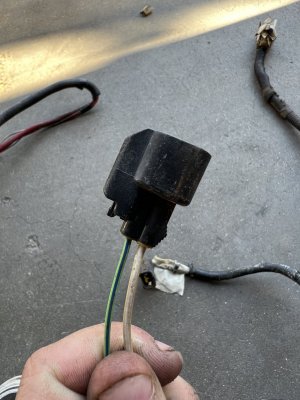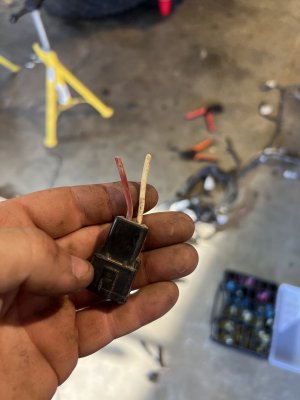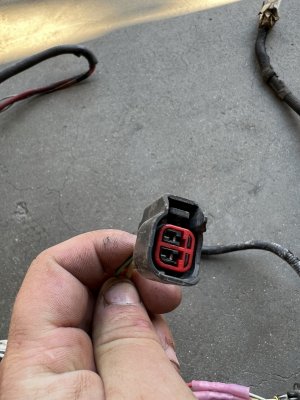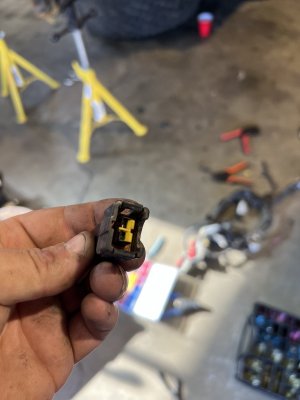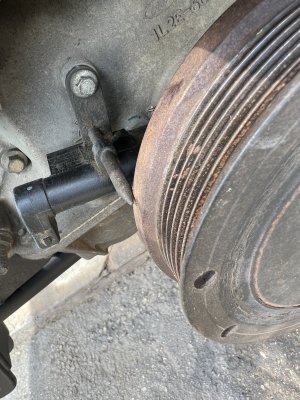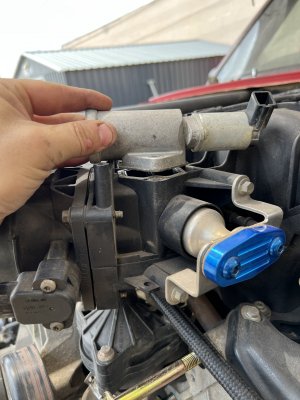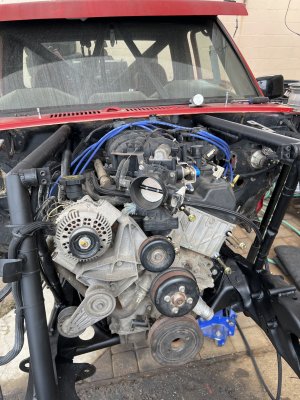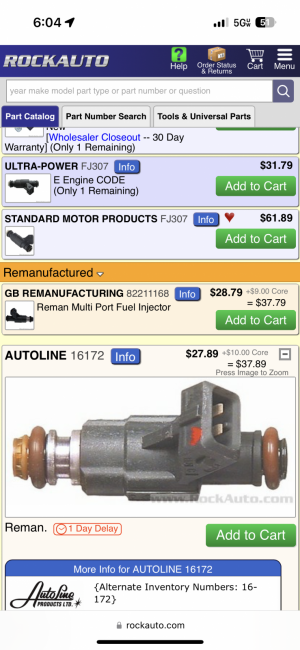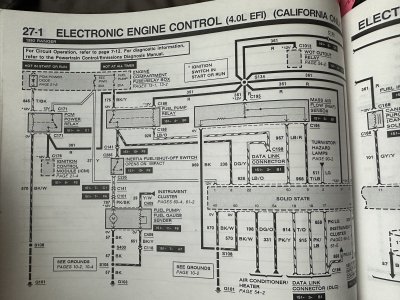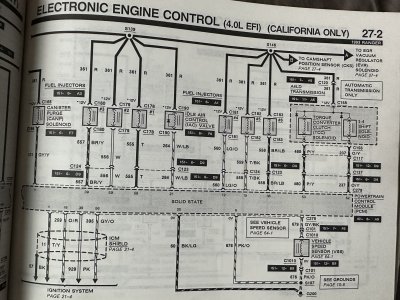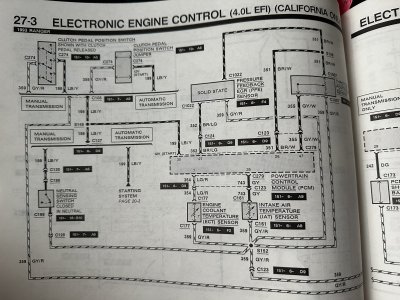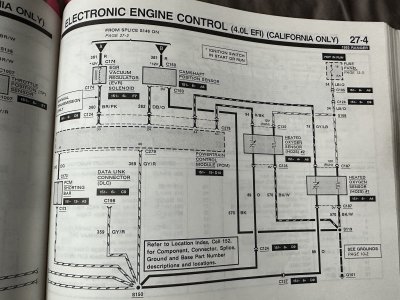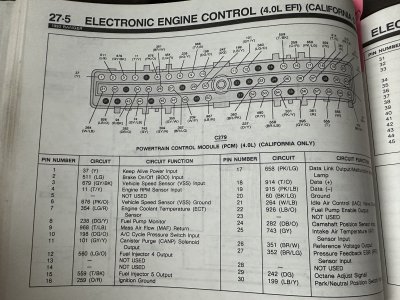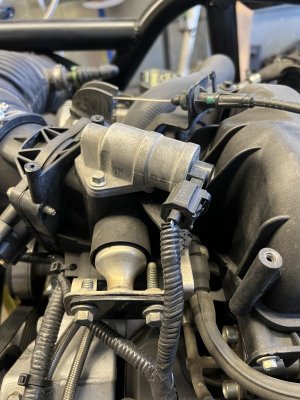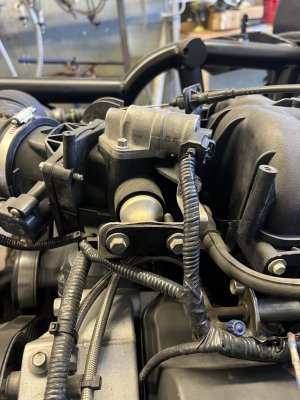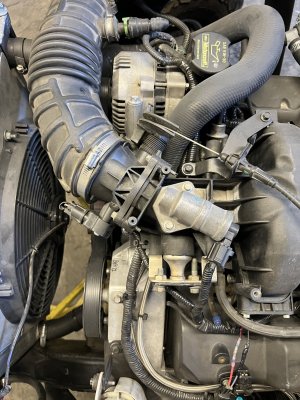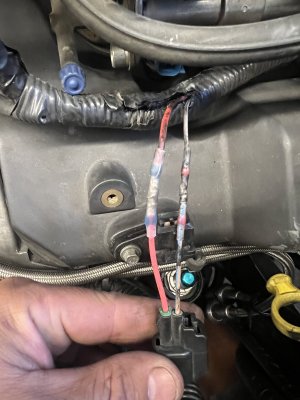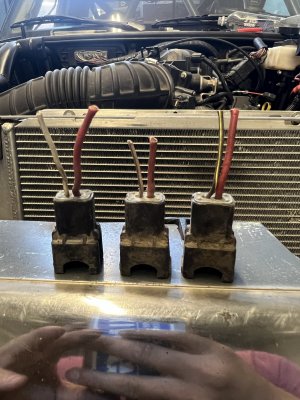marcytech
Well-known member
- Joined
- Apr 6, 2022
- Messages
- 414
Starting this thread for anyone interested in the swap
what this thread will cover: swapping a 4.0 SOHC engine into a OBD1 or OBD2 ranger/expo that has a 4.0 ohv engine. this swap uses the OBD1 OR OBD2 OHV engine wireharness, computer, and body harness.
whats the difference? almost double the horsepower and 50 ft lbs of tq at the wheels.
I had my computer tuned to help run the SOHC as best as possible, and before any adjustments were made we made note that the SOHC is completely safe to run on an old OBD1 or OBD2 OHV computer with a stock tune.
its a little fat on the top end but doesnt lean out anywhere
SOHC power output on original OHV tune was 165HP, 180TQ. (OHV power on same computer and in the same truck was 100 HP/139TQ)
*after a tune the SOHC put out 179HP/185TQ in a ranger with a C4, 35S and 5.13 gears.
first off lets start with mounting the engine into the truck.
1. trucks with heater boxes still in will need clearancing on the box for the passenger side valve cover.
2. engine mounts:
- the stock 4.0 ohv engine mounts will work for both 2wd. they will also work on 4wd frames but will need to be shimmed up a little bit. this can be done with a plate or washers inbetween the frame and bracket.
-Autofab 4.0 ohv engine mounts will also work and do not need to be shimmed
3. the transmission bell housing is the same aside from one of the top bolts.
4. the SOHC engine itself is a bit taller than the OHV, so if you have a cross tube on an engine cage youll want to watch for clearance issues
- ACCESSORIES.
1. steering pump.
-the OHV steering pump will not work. you will need to get a SOHC steering pump. this is good because its WAY quieter.
- custom lines for the steering pump will need to be made because the pump is in a different location than the old one.
2. alternator.
- the OHV alternator WILL bolt to the SOHC minus one bolt. you can build a bracket to accommodate the other missing bolt or leave it with 2 bolts. pulley location is perfect.
*note: you have to use the ohv alternator because of wiring.
3 Air conditioning: N/A for my application.
- FUEL DELIVERY
-your OBD1 ranger has a return style fuel rail. in order to use your existing fuel system for the SOHC you will need one of two things
*fuel rails from a 1997 explorer SOHC 4.0 (these are the only year sohc return style fuel rails.
OR
*new fuel pressure regulator that sends correct pressure to the fuel rail, and a return bypass back to the tank.
i went with the 1997 explorer fuel rails.
- you will use the SOHC injectors.
- WIRING
remember. you are putting a OBD2 controlled engine into a OBD1 environment. no sensor from the sohc will talk to the OBD1 computer
- injector wiring will be the same polarities and plugs between the ohv and sohc. so plug them in like normal.
-use the IAC off the OHV. it uses the same mounting surface and bolt holes on the SOHC just in a different location.
-use the old crank position sensor off the OHV. it bolts to the front of the block the exact same way.
-throttle position sensor is the same between the two engines. use either one.
-use your old OHV OBD1 MAF
- the OHV has a separate AIT (air intake temp sensor) and the SOHC has it integrated with the MAF. you will need to make a mount for the old IAT
* what i did was made a plug to block off the egr port on the SOHC intake and tapped the plug with 1/4" npt so the old AIT sensor threaded into the newly made plug (PIC BELOW)
- your OHV may or may not have a cam position sensor. this is the only sensor that will not transfer over. the SOHC has this sensor on the driver side valve cover. leave it bolted in so it doesnt leak, but no cam sensor will be used. the engine runs with out it. on the OBD1 system this sensor is only used to measure knock.
- you used the OHV alternator so that plugs in like normal
- temp sensors. you have 2. both are 3/8" npt thread. on the SOHC thermostat housing there will be spaces for two sensors as well, but one is a smaller thread. drill and tap it to accomodate your OHV sensors.
- oil pressure sensor is transfered from OHV to SOHC and uses the same thread pitch on the driver side of the block.
- ignition coil is exactly the same. use either one.
-MISC
youll need to get a sohc throttle cable, it mounts to the old pedal just fine.
IAT SENSOR PLUG
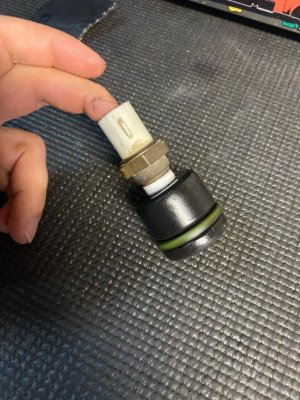
old cps on new block
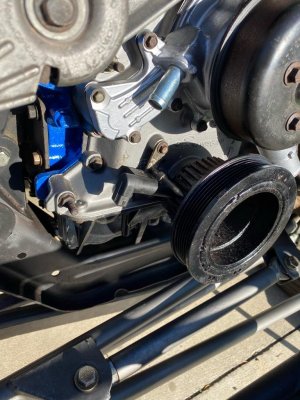
missing bolt on alternator
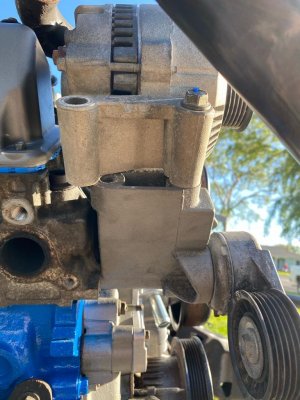
what this thread will cover: swapping a 4.0 SOHC engine into a OBD1 or OBD2 ranger/expo that has a 4.0 ohv engine. this swap uses the OBD1 OR OBD2 OHV engine wireharness, computer, and body harness.
whats the difference? almost double the horsepower and 50 ft lbs of tq at the wheels.
I had my computer tuned to help run the SOHC as best as possible, and before any adjustments were made we made note that the SOHC is completely safe to run on an old OBD1 or OBD2 OHV computer with a stock tune.
its a little fat on the top end but doesnt lean out anywhere
SOHC power output on original OHV tune was 165HP, 180TQ. (OHV power on same computer and in the same truck was 100 HP/139TQ)
*after a tune the SOHC put out 179HP/185TQ in a ranger with a C4, 35S and 5.13 gears.
first off lets start with mounting the engine into the truck.
1. trucks with heater boxes still in will need clearancing on the box for the passenger side valve cover.
2. engine mounts:
- the stock 4.0 ohv engine mounts will work for both 2wd. they will also work on 4wd frames but will need to be shimmed up a little bit. this can be done with a plate or washers inbetween the frame and bracket.
-Autofab 4.0 ohv engine mounts will also work and do not need to be shimmed
3. the transmission bell housing is the same aside from one of the top bolts.
4. the SOHC engine itself is a bit taller than the OHV, so if you have a cross tube on an engine cage youll want to watch for clearance issues
- ACCESSORIES.
1. steering pump.
-the OHV steering pump will not work. you will need to get a SOHC steering pump. this is good because its WAY quieter.
- custom lines for the steering pump will need to be made because the pump is in a different location than the old one.
2. alternator.
- the OHV alternator WILL bolt to the SOHC minus one bolt. you can build a bracket to accommodate the other missing bolt or leave it with 2 bolts. pulley location is perfect.
*note: you have to use the ohv alternator because of wiring.
3 Air conditioning: N/A for my application.
- FUEL DELIVERY
-your OBD1 ranger has a return style fuel rail. in order to use your existing fuel system for the SOHC you will need one of two things
*fuel rails from a 1997 explorer SOHC 4.0 (these are the only year sohc return style fuel rails.
OR
*new fuel pressure regulator that sends correct pressure to the fuel rail, and a return bypass back to the tank.
i went with the 1997 explorer fuel rails.
- you will use the SOHC injectors.
- WIRING
remember. you are putting a OBD2 controlled engine into a OBD1 environment. no sensor from the sohc will talk to the OBD1 computer
- injector wiring will be the same polarities and plugs between the ohv and sohc. so plug them in like normal.
-use the IAC off the OHV. it uses the same mounting surface and bolt holes on the SOHC just in a different location.
-use the old crank position sensor off the OHV. it bolts to the front of the block the exact same way.
-throttle position sensor is the same between the two engines. use either one.
-use your old OHV OBD1 MAF
- the OHV has a separate AIT (air intake temp sensor) and the SOHC has it integrated with the MAF. you will need to make a mount for the old IAT
* what i did was made a plug to block off the egr port on the SOHC intake and tapped the plug with 1/4" npt so the old AIT sensor threaded into the newly made plug (PIC BELOW)
- your OHV may or may not have a cam position sensor. this is the only sensor that will not transfer over. the SOHC has this sensor on the driver side valve cover. leave it bolted in so it doesnt leak, but no cam sensor will be used. the engine runs with out it. on the OBD1 system this sensor is only used to measure knock.
- you used the OHV alternator so that plugs in like normal
- temp sensors. you have 2. both are 3/8" npt thread. on the SOHC thermostat housing there will be spaces for two sensors as well, but one is a smaller thread. drill and tap it to accomodate your OHV sensors.
- oil pressure sensor is transfered from OHV to SOHC and uses the same thread pitch on the driver side of the block.
- ignition coil is exactly the same. use either one.
-MISC
youll need to get a sohc throttle cable, it mounts to the old pedal just fine.
IAT SENSOR PLUG

old cps on new block

missing bolt on alternator


